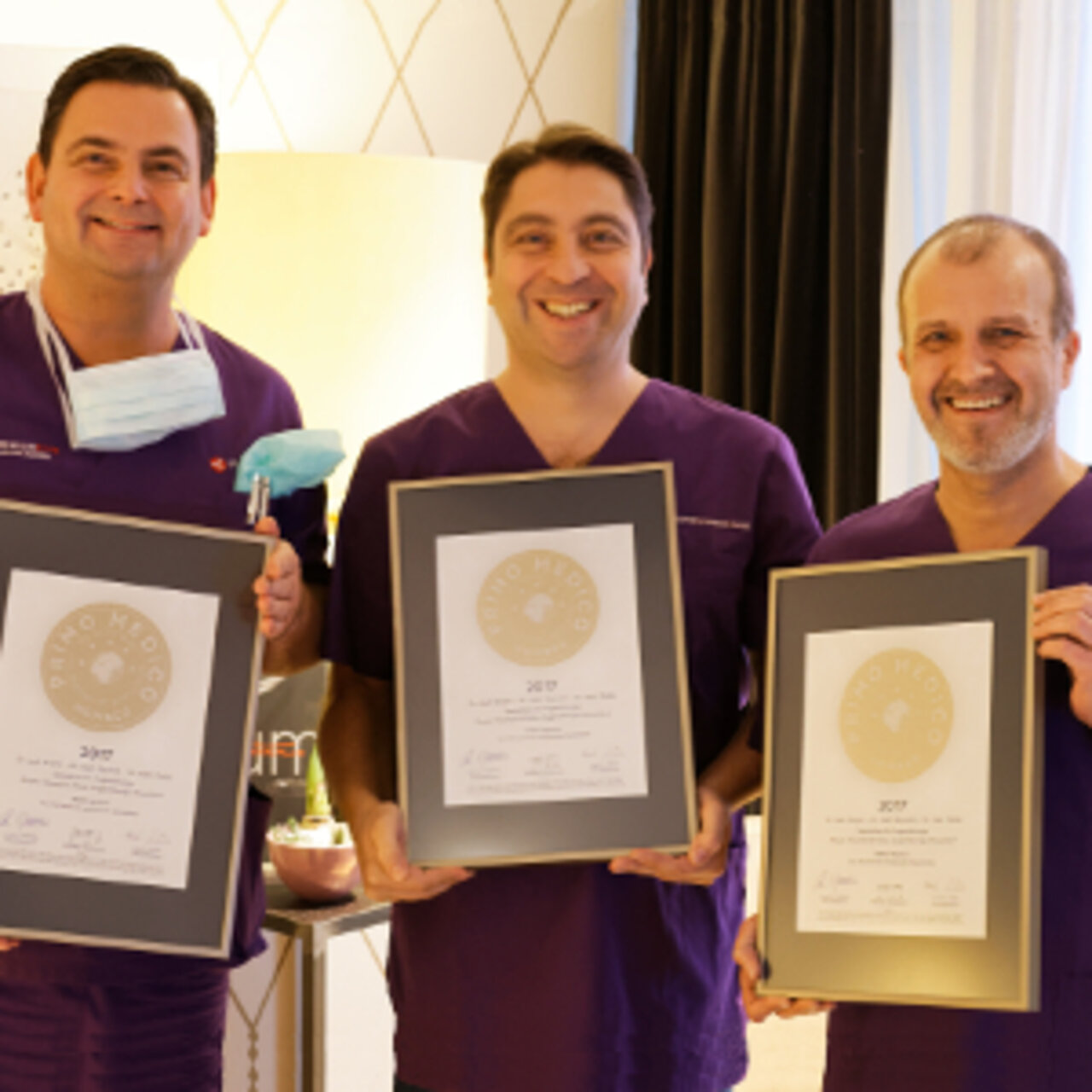Specialists in Ptosis
3 Specialists found
Information About the Field of Ptosis
What does ptosis meen?
The term ptosis describes the partial or complete drooping of the upper eyelid. Ptosis can affect both eyes or just one eye and leads to a narrowing of the gap between the upper and lower eyelids.
Ptosis may present in various degrees of severity. Mild cases may show almost no visible drooping of the eyelid on the outside, while severe cases may nearly fully cover the pupil. Respectively, ptosis can impair vision to different degrees.
What are the causes of ptosis?
There are various causes of ptosis. First of all, we distinguish between inborn forms and forms with another underlying disease causing the drooping of the eyelid.
In medical terminology, the congenital form of ptosis is also referred to as ptosis congenita. Its causes can be further subdivided. While the underlying cause can be a malformation of the levator palpebraris superioris muscle which lifts the upper eyelid, the defect may also be found in the area of the innervating nerves.
Disruption of the nerve can have genetic causes in many cases and may be inherited, too. One possible reason for muscle damage can be normal age-related degeneration, which usually presents with rather mild symptoms.
A number of underlying diseases can produce ptosis as a symptom. Also here the damage can affect the muscle or the responsible nerve.
Neuromuscular diseases like myasthenia gravis are among these and are associated an impaired signal transmission from the nerves to the respective muscles. Should the muscles of the upper eyelid be affected, ptosis results.
Horner syndrome can also present with ptosis along with other symptoms including a sunken eyeball (enophthalmos) and a narrowing of the pupil (miosis). It is caused by damage to the sympathetic part of the autonomic nervous system.
Also mechanical stimuli can cause a droopy eyelid. Examples include scars, tumors or excessive skin folds due to ageing.
Which symptoms are associated with ptosis?
First of all, it is important to assess whether ptosis is caused by an underlying disease causing the eyelid to droop, or whether ptosis itself is the disease.
If it is the first case, ptosis as such is called a symptom.
No matter the cause, ptosis will cause a narrowing of the fissure between the upper and lower eyelids. Consequently, the pupil is covered, making vision more complicated. How much the eyesight is affected is entirely dependent on the degree of ptosis.
Patients have to work hard to overcome their visual restriction. This usually involves raising the eyebrows, wrinkling the forehead, and overextending the neck backwards.
Diagnosis: How can a specialist recognize ptosis?
Often, a close inspection of the patient's eyes is all the specialist needs to diagnose ptosis, so it is usually a visual diagnosis.
It is more difficult to identify the cause of the droopy eyelid.
In cases where a genetic cause for ptosis is suspected, the specialist should also obtain a detailed family history.
In principle, every case of ptosis must always be investigated for a neurological cause. Once a detailed medical history has been taken and a physical examination has been completed, more specific investigations need to be arranged. Apart from the clinical examination of cranial nerve function, in some cases this may also include testing the nerve conduction velocity by a neurologist.
Therapy: What treatment is available for ptosis?
In terms of treatment of ptosis, the presence of any underlying disease should always be considered. Should this be the case, then the respective therapy will always focus on targeting the underlying disease first.
If ptosis is not resolved by treating the underlying disease or if no underlying disease can be determined as the cause, surgery can be performed to correct ptosis.
In each case, the choice of surgical method depends on which defect has caused the eyelid to droop
Particular care must be taken with any technique to avoid excessive correction of ptosis, allowing the eyelid to close properly after surgery.
If the muscle responsible for eyelid closure is weakened, it can be reinforced by partial removal or folding. In case the muscle does not attach properly to the upper eyelid, it can be fixed surgically. Congenital development errors of the muscle can result in the upper eyelid being attached to a different muscle near the forehead, allowing the eyelid to be slightly opened by frowning.
In children with one-sided ptosis in particular, surgery is recommended as early as possible to allow their vision to develop normally.
Risks, prognosis and chances of cure
For ptosis, the prognosis depends largely on its cause. In case ptosis is a symptom brought on by an underlying disease, then the prognosis of the that disease is crucial.
In most cases, patients with ptosis can recover full vision with surgical treatment.
Like any surgery, however, surgical treatment of ptosis carries certain risks.
The eyelid may be overly shortened or pulled upwards, leaving behind a gap between the upper and lower eyelids that doesn't close properly after the operation. Consequently, it is possible that the eye dries out or that cornea or conjunctiva develop more defects. This is called overcorrection.
If one-sided congenital ptosis in children is not corrected quickly, the eye cannot develop properly as the field of vision is restricted. This results in children suffering from various visual disorders. If the vision is only very slightly limited by the ptosis, then surgery can potentially be done at a later time or perhaps not at all.
Which doctors & clinics specialize in the treatment of ptosis?
A drooping of the upper eyelid may result in a reduced quality of life for those affected, both due to the having restricted vision as well as for aesthetic reasons. An experienced specialist should therefore be consulted to ensure adequate diagnostics and therapy.
All doctors listed here have been carefully evaluated and selected by us. Each of them is highly experienced in the treatment of ptosis.
You can benefit from their expertise and schedule an initial appointment with one of our ophthalmologists.
Sources:
- Amboss, Nachschlagewerk für Mediziner
- next.amboss.com/de/article/lO0vsT
- Peter Walter, Niklas Plange; Basiswissen Augenheilkunde. Springer-Verlag; 1. Ausgabe 2017
- Franz Grehn; Augenheilkunde. Springer-Verlag; 32. Auflage 2019


